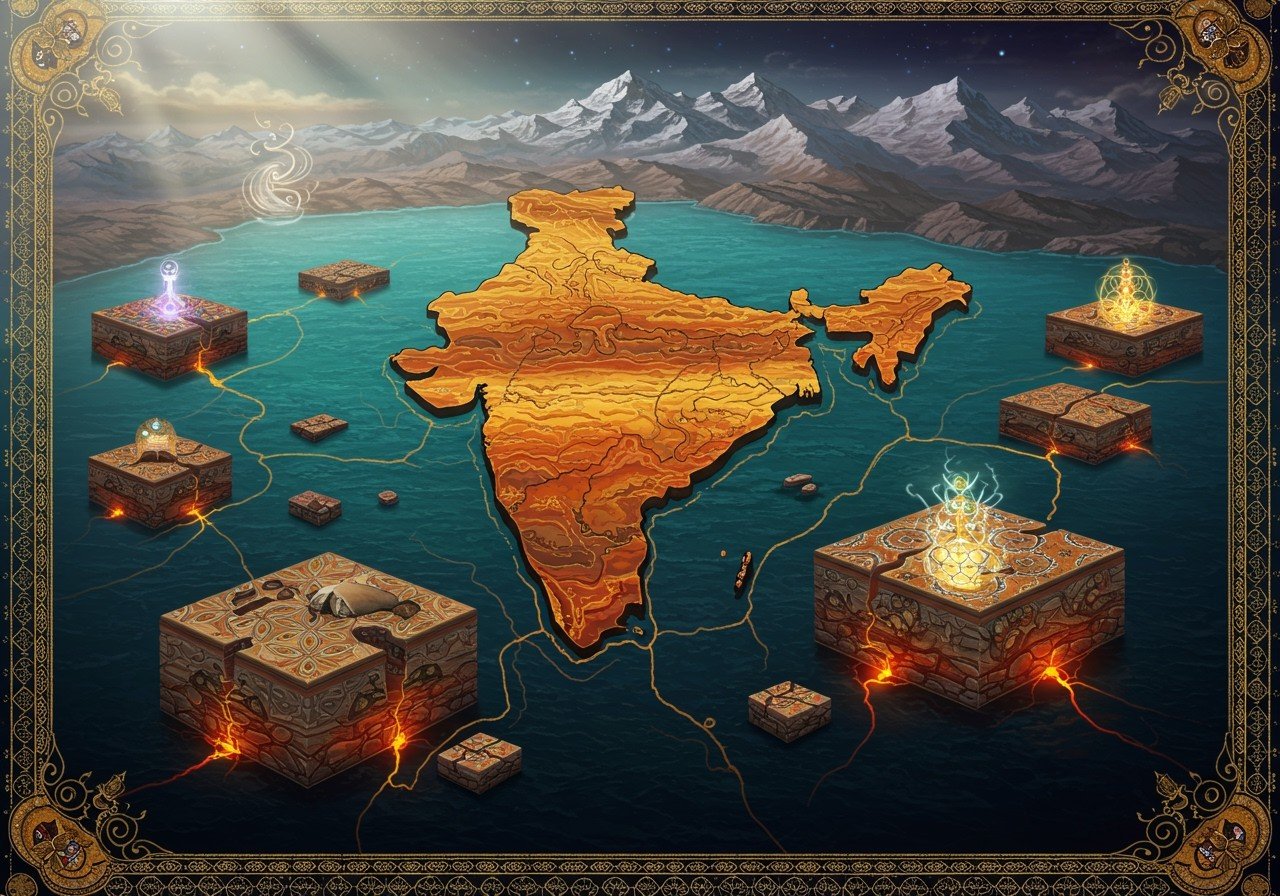
The Indian subcontinent boasts a captivating geological narrative spanning millions of years. This article delves into the formation and evolution of this landmass, tracing its origins from the ancient supercontinent Gondwana to its present-day structure. By understanding this history, we gain a deeper appreciation for the unique geological features and processes that have shaped this remarkable region.
Origins within Gondwana
The Indian subcontinent was once an integral part of Gondwana, a supercontinent that existed during the late Paleozoic and early Mesozoic eras. Approximately 180 million years ago, Gondwana began to break apart, initiating the drift of the Indian Plate. Rifting and seafloor spreading played key roles in this separation, with the Tethys Ocean forming between the drifting Indian Plate and the Eurasian Plate.
Evidence from paleomagnetic studies supports the theory of continental drift. Fossils like Glossopteris and Mesosaurus provide valuable insights into the flora and fauna of Gondwana. The principles of plate tectonics significantly influenced the early trajectory of the Indian Plate.
The Northward Voyage
Following its separation from Gondwana, the Indian Plate embarked on a northward journey. This movement was remarkably swift compared to other tectonic plates and culminated in its collision with the Eurasian Plate around 50 million years ago. Geological evidence, including ocean floor magnetic anomalies and sedimentary records, meticulously traces this incredible voyage.
Throughout its drift, the Indian Plate experienced significant shifts in climate and environment. The Deccan Traps, a prominent geological formation, emerged during this period, influenced by mantle plumes and hotspots. This movement also had a profound impact on the marine ecosystems of the Tethys Ocean.
The Rise of the Himalayas
The collision between the Indian and Eurasian plates gave rise to the majestic Himalayas. This process, known as orogeny, involves mountain building through tectonic plate collisions. Geological evidence, such as marine fossils discovered at high altitudes, strongly supports this theory.
The Himalayan orogeny unfolded in distinct phases, from the initial collision to the ongoing uplift and deformation. Major fault systems, such as the Main Central Thrust and Main Boundary Thrust, played a crucial role in shaping the Himalayas. Over millions of years, erosion and weathering have sculpted this breathtaking landscape. The Himalayas also exert a significant influence on regional climate patterns, including the monsoon system.
Key Geological Features
The Indo-Gangetic Plain
The Indo-Gangetic Plain, a vast expanse of fertile land, owes its existence to sediment deposition from the Himalayas over millions of years. The Ganga and Indus rivers play a vital role in shaping this area. Their regular flooding carries nutrient-rich silt, enriching the soil and making it ideal for agriculture. This region is essential for India’s food production.
The Western and Eastern Ghats
The Western and Eastern Ghats are mountain ranges that stretch along India’s coastlines. Formed through tectonic uplift and erosion, the Western Ghats are older and higher, characterized by lush forests and diverse wildlife. The Eastern Ghats, while less continuous, are equally significant, boasting unique ecosystems. These ranges influence climate and weather patterns, particularly the monsoon.
The Thar Desert
Located in northwestern India, the Thar Desert presents a fascinating geological landscape. Shaped by wind erosion and sediment deposition, it features sand dunes, rocky outcrops, and sparse vegetation. Despite its harsh conditions, the Thar Desert supports a surprising variety of life adapted to arid environments.
The Deccan Traps
The Deccan Traps constitute one of the world’s largest volcanic formations, created by massive volcanic eruptions approximately 66 million years ago. Mantle plumes and hotspots triggered these eruptions, blanketing a vast area with basaltic lava. The unique soil composition of this region is a direct result of this volcanic activity.
The Indian Shield
The Indian Shield is a stable geological region composed of ancient rock formations dating back to the Eoarchean Era. These rocks are among the oldest on Earth. The shield encompasses deformed and altered rocks, offering invaluable insights into our planet’s early history, as described in sources like the Geological Survey of India’s mappings.
River Systems
India’s intricate river systems, including the Ganga and Indus, have played a pivotal role in shaping the subcontinent’s landscape. These rivers erode mountains, transport sediments, and create fertile plains. They are essential for agriculture, transportation, and cultural practices.
Poojn.in: Connecting You to India’s Heritage
India’s geological history is deeply intertwined with its cultural heritage. Poojn.in, India’s largest cultural goods and services store, offers a wide selection of products that connect you to this rich heritage.
-
Alta (poojn.in): This traditional red dye symbolizes the rich mineral deposits formed throughout India’s geological evolution. Sourced from natural ingredients, alta allows you to connect with the ancient earth that formed millions of years ago when India separated from Gondwana.
-
Gangajal (poojn.in): We offer pure Gangajal from the sacred Ganges River, which flows through valleys carved by ancient geological processes. The Ganges’ path traces the natural formations created during the collision of the Indian and Eurasian plates.
-
Sacred Stones and Crystals (poojn.in): Explore our collection of sacred stones and crystals, formed over millions of years of geological processes. These items, including Sphatik (Clear Quartz) and Rudraksha, are essential for various pujas and represent the mineral wealth of the Indian subcontinent.
Visit Poojn.in to discover our complete range of traditional items that connect you to India’s geological and cultural heritage.
Conclusion
Exploring the geological history of the Indian subcontinent reveals a tapestry of diverse landscapes and unique features. From the fertile Indo-Gangetic Plain to the towering Himalayas, each region holds a story shaped by millions of years of natural processes. Poojn.in offers a way to connect with this heritage.


